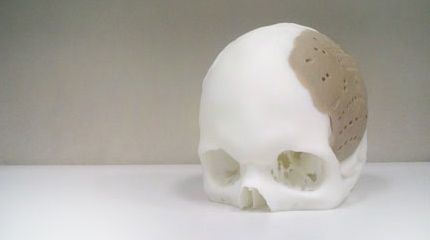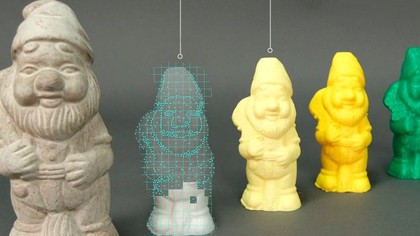'Tron' made real and a medical breakthrough - 3D thrills this week

What a week for 3D.
Dita Von Teese slinked into the world's first 3D printed dress, one form fitted to burlesque dancer's curves and sure to be the envy of many a little black frock, and now we've learned that the tri-dimensional printing process came through in a big way for a man in medical need.
According to News.com.au, a U.S. patient had 75 percent of his skull replaced with a custom-made 3D printed implant. A 3D scan of the unnamed man's head was taken to form a plastic prosthetic fit for his features, while Oxford Performance Materials (OPM), the company behind the implant, sought regulatory approval.
After getting the green light, a printed bone implant was inserted into the man's skull earlier this week. The replacement includes etched surface details to encourage cell and bone growth, News noted.
OPM said that following U.S. Food and Drug Administration approval granted on Feb. 18, it can now provide 3D printouts to replace bone damaged by disease or trauma. It estimates that about 500 U.S. citizens could make use of the tech each month.
Let's get digitized
3D printing is squaring up to be a 21st solution to many a problem, but what about the (computer) age-old issue of putting real-world objects into the digital realm?
MakerBot thinks it's got an answer, one it wants to get to consumers by year's end.
Sign up for breaking news, reviews, opinion, top tech deals, and more.
During his keynote today at South By Southwest Interactive in Austin, Texas, MakerBot founder Bre Pettis announced the company's Digitizer Desktop 3D Scanner, still in prototype form but an intriguing entrant into the 3D ecosystem nonetheless.

The Digitizer uses a pair of lasers to scan small 3D objects - Pettis used a gnome - and then will input them into a computer.
"If you've seen Tron, this is kind of like what happens when Flynn gets digitized into the game grid, and then it makes a 3D model," Pettis, as reported by the VentureBeat, said. "Then you can make as many copies as you need."
When used in tandem with MakerBot's Replicator 3D printers, it becomes the "washer-dryer combo of 3D printing."
While the idea isn't new, the Digitizer aims to make the process, typically reserved for complex computer-aided design, easy and accessible for everyone.
Orders should be ready this fall, though how much you'll have to cough up is still unknown. Digitzer dreamers can sign up to receive news on the product and find out when its available through the MakerBot website.

Michelle was previously a news editor at TechRadar, leading consumer tech news and reviews. Michelle is now a Content Strategist at Facebook. A versatile, highly effective content writer and skilled editor with a keen eye for detail, Michelle is a collaborative problem solver and covered everything from smartwatches and microprocessors to VR and self-driving cars.